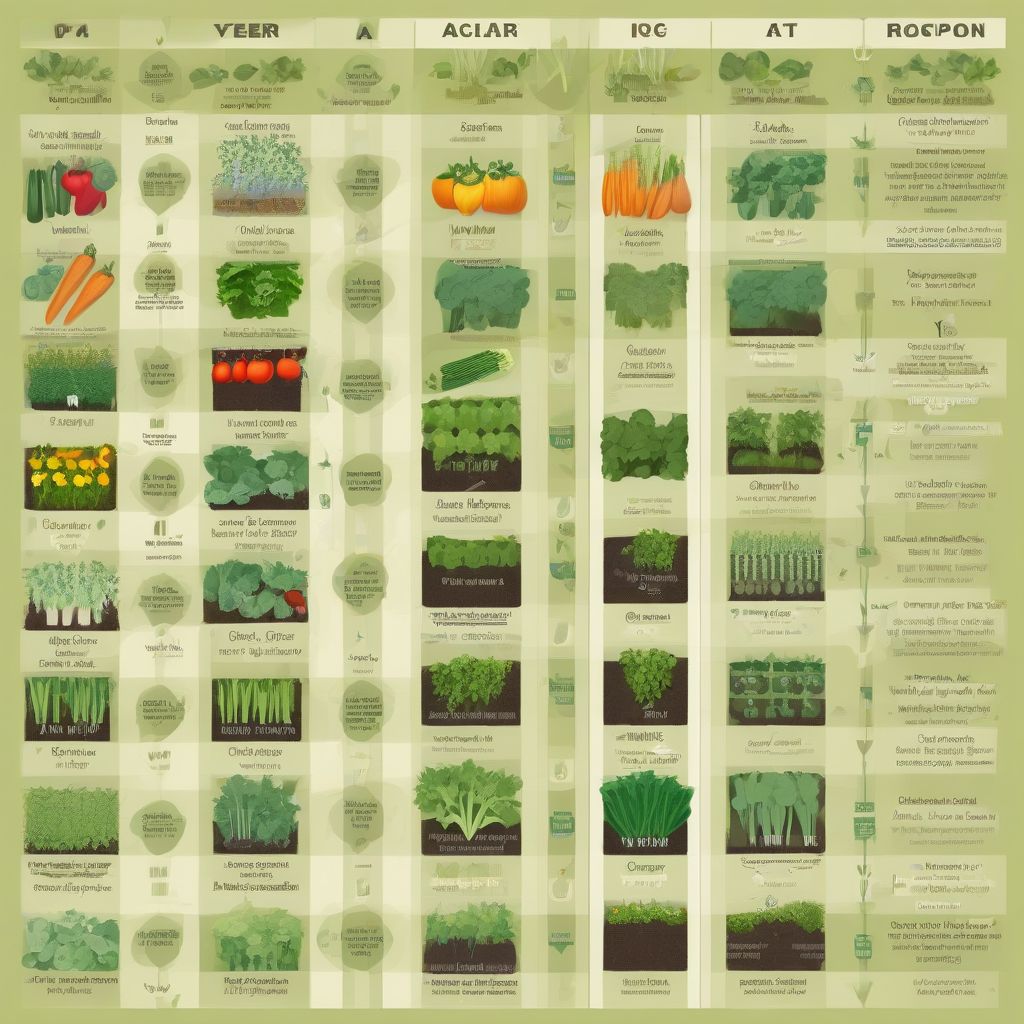Imagine a thriving garden, bursting with vibrant vegetables year after year. Sounds idyllic, right? But without proper care, that dream can quickly turn into a nightmare of wilting plants and disappointing yields, often due to soil-borne diseases. Crop rotation is a simple yet powerful technique that can help you maintain healthy soil and prevent these diseases from taking hold. It’s like giving your garden a fresh start each season, ensuring a bountiful harvest for years to come.
Understanding the Power of Crop Rotation
Soil-borne diseases are caused by microscopic organisms like fungi, bacteria, and nematodes that live in the soil. These pathogens can build up over time, especially if you plant the same crops in the same spot repeatedly. Crop rotation disrupts this cycle by alternating plant families with different susceptibility to these diseases. This helps to:
Reduce Pathogen Buildup
By rotating crops, you essentially starve the pathogens that target specific plant families. If a pathogen’s preferred host isn’t present, its population dwindles, making it less likely to cause significant damage in future plantings.
Improve Soil Health
Different crops have different nutrient needs and root systems. Rotating crops can help to balance soil nutrients, improve soil structure, and reduce erosion. For example, legumes like beans and peas add nitrogen to the soil, benefiting subsequent crops.
Minimize Weed Problems
Certain weeds are associated with specific crops. Rotating crops can disrupt the life cycle of these weeds, helping to keep them under control without relying heavily on herbicides.
Creating an Effective Crop Rotation Plan
Developing a successful crop rotation plan requires some planning and understanding of your garden’s needs. Here’s a step-by-step guide to get you started:
1. Know Your Plant Families
The key to effective crop rotation is knowing which plants belong to the same family. Plants within the same family are often susceptible to the same diseases and pests. Common vegetable families include:
- Solanaceae (Nightshades): Tomatoes, peppers, potatoes, eggplant
- Cucurbitaceae (Cucurbits): Cucumbers, squash, melons, pumpkins
- Brassicaceae (Crucifers): Broccoli, cabbage, cauliflower, kale
- Fabaceae (Legumes): Beans, peas, lentils
- Alliaceae (Onions): Onions, garlic, leeks, chives
2. Plan Your Rotation Cycle
A typical rotation cycle lasts 3-4 years, although longer cycles can be even more beneficial. The goal is to avoid planting crops from the same family in the same location for consecutive years. A simple 4-year rotation might look like this:
- Year 1: Legumes (beans, peas)
- Year 2: Brassicas (broccoli, cabbage)
- Year 3: Nightshades (tomatoes, peppers)
- Year 4: Cucurbits (squash, cucumbers)
3. Consider Cover Crops
Cover crops, like rye or clover, are planted during the off-season to improve soil health. They can help suppress weeds, add organic matter, and prevent soil erosion. Incorporate cover crops into your rotation plan for added benefits.
4. Adapt to Your Garden
Every garden is unique. Consider your climate, soil type, and the specific diseases and pests that are prevalent in your area when planning your rotation.
Example Crop Rotation Scenarios
Here are a few example crop rotation scenarios to illustrate how this technique can be applied in practice:
Scenario 1: Small Vegetable Garden
- Year 1: Tomatoes, Basil
- Year 2: Beans, Carrots
- Year 3: Lettuce, Spinach
- Year 4: Peppers, Onions
Scenario 2: Garden with Disease Issues
If you’ve had problems with specific diseases, like verticillium wilt in tomatoes, ensure that you rotate out the susceptible crops for a longer period, even up to 7 years.
 Crop Rotation Chart
Crop Rotation Chart
Tips for Success
- Keep Records: Maintaining a garden journal can help you track your rotations and identify any potential problems.
- Start Small: If you’re new to crop rotation, start with a simple plan and gradually expand as you gain experience.
- Research Local Resources: Your local agricultural extension office can provide valuable information about specific diseases and pests in your area.
- “Crop rotation, much like a balanced diet for humans, provides a variety of nutrients and strengthens the soil’s immune system.” – (Hypothetical quote from Dr. Jane Doe, Soil Scientist).
Conclusion
Crop rotation is a cornerstone of sustainable gardening. By understanding the principles of crop rotation and implementing a well-planned strategy, you can significantly reduce the incidence of soil-borne diseases, improve soil health, and enjoy a bountiful harvest year after year. It’s a simple yet effective technique that empowers you to create a thriving and resilient garden. Do you have any crop rotation tips to share? Let us know in the comments below!



